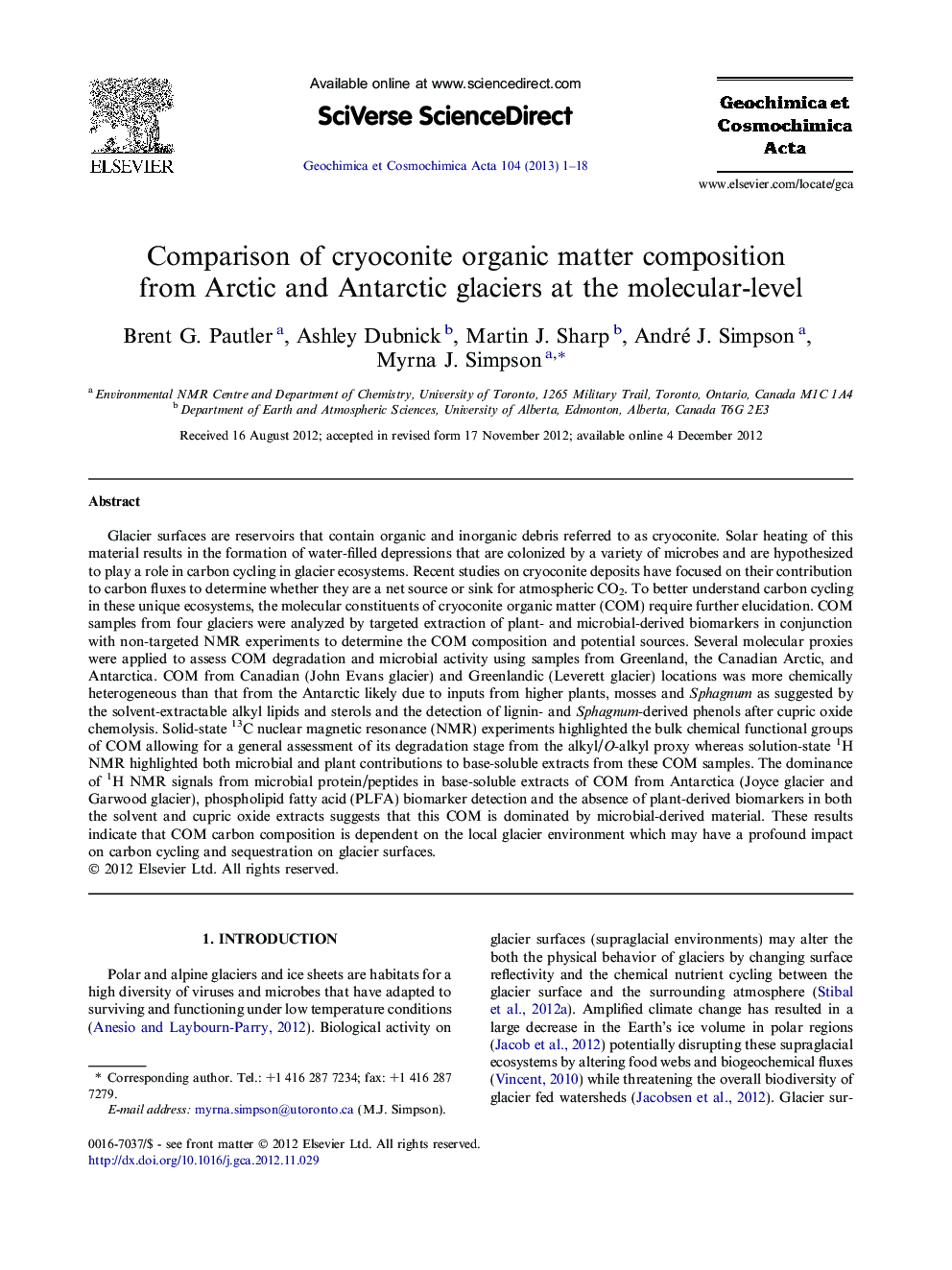| کد مقاله | کد نشریه | سال انتشار | مقاله انگلیسی | نسخه تمام متن |
|---|---|---|---|---|
| 4702586 | 1638053 | 2013 | 18 صفحه PDF | دانلود رایگان |
Glacier surfaces are reservoirs that contain organic and inorganic debris referred to as cryoconite. Solar heating of this material results in the formation of water-filled depressions that are colonized by a variety of microbes and are hypothesized to play a role in carbon cycling in glacier ecosystems. Recent studies on cryoconite deposits have focused on their contribution to carbon fluxes to determine whether they are a net source or sink for atmospheric CO2. To better understand carbon cycling in these unique ecosystems, the molecular constituents of cryoconite organic matter (COM) require further elucidation. COM samples from four glaciers were analyzed by targeted extraction of plant- and microbial-derived biomarkers in conjunction with non-targeted NMR experiments to determine the COM composition and potential sources. Several molecular proxies were applied to assess COM degradation and microbial activity using samples from Greenland, the Canadian Arctic, and Antarctica. COM from Canadian (John Evans glacier) and Greenlandic (Leverett glacier) locations was more chemically heterogeneous than that from the Antarctic likely due to inputs from higher plants, mosses and Sphagnum as suggested by the solvent-extractable alkyl lipids and sterols and the detection of lignin- and Sphagnum-derived phenols after cupric oxide chemolysis. Solid-state 13C nuclear magnetic resonance (NMR) experiments highlighted the bulk chemical functional groups of COM allowing for a general assessment of its degradation stage from the alkyl/O-alkyl proxy whereas solution-state 1H NMR highlighted both microbial and plant contributions to base-soluble extracts from these COM samples. The dominance of 1H NMR signals from microbial protein/peptides in base-soluble extracts of COM from Antarctica (Joyce glacier and Garwood glacier), phospholipid fatty acid (PLFA) biomarker detection and the absence of plant-derived biomarkers in both the solvent and cupric oxide extracts suggests that this COM is dominated by microbial-derived material. These results indicate that COM carbon composition is dependent on the local glacier environment which may have a profound impact on carbon cycling and sequestration on glacier surfaces.
Journal: Geochimica et Cosmochimica Acta - Volume 104, 1 March 2013, Pages 1–18
